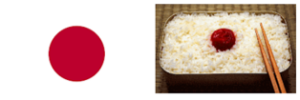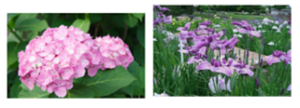“Tsuyu” The Japanese Rainy Season
Every year from late May and into the month of June, Japan has its rainy season called ‘Tsuyu’. This covers the whole country, except Hokkaido, the northern part of Japan. The period leading up to the rainy season is known as ‘Tsuyu-iri’ and the end of the season is referred to as ‘Tsuyu-ake’. The distinguishing feature of the Japanese ‘Tsuyu’ compared to the damp feeling and the mist-like rain that falls every day. Due to this, we have to take care of damp and mould creeping into our houses and make sure our food stays dry to avoid the risk of food poisoning.
The word ‘Tsuyu’ is written with two characters, that for Japanese plum (梅) and rain (雨). This has led to several theories about the origin of the term. One of the most convincing theories comes from the fact that Japanese plums ‘ume’ ripen at this time of year.

Japanese Plums ‘ume’
Flower Of Plums
Japanese people take special care of ‘ume’ at this time of year, as they have special health-giving properties. Ume are said to protect people from the three well-known types of illness (Illnesses from food, problems of blood circulation and illnesses from the water we drink), so we consume plum alcohol and eat pickled plums. The red ‘shiso’ (a type of edible leaf) that we use in the pickling process is also particularly tasty around the ‘Tsuyu’ season.
When we were children, our packed lunches for school (often ‘Hi-no-Maru’ Bento – rice with a pickled plum in the centre which resembles the Japanese nationalflag
‘Hi-no-Maru)and our rice balls for school trips often had pickled plums in them.
Our Mums used to put them in for our health. Even when I go abroad now, I take pickled plums with me. They make a wonderful gift to Japanese people living abroad as a present from home.

Japanese national flag/Hi-no-Maru bento

rice ball
In addition, ‘Tsuyu’ is a crucial period for fames for the planting of fruits, vegetables and various crops, because of the amount of rain that falls. In particular, ‘Tsuyu’ is the period for the toughest job of the year for framers, that of planting rice seeds. Even though this job is performed by machines now, traditionally the whole community would come together and form a line squatting in the rain water and spend a day planting seeds under the water line. This is a truly arduous task. We also have a festival in the community to pray for a good harvest of rice in the autumn. Since ancient times, these practices have strengthened ties in the community and promoted community sprit.

This festival includes special dance called ‘Bon-odori’. For this, adults, children and the elderly dance halfway into the night in times. This tradition is still alive today and even as an adult. I still feel nostalgic when I think of it. Thinking about it brings back many fond memories of childhood for me.

However, despite all this, most Japanese people dislike the ‘Tsuyu’ season. There are many reasons for this. Not only do we have to carry an umbrella everywhere with us and have to stay inside, it’s also a period when bacteria and mould can multiply. It’s a difficult to dry you washing and clothes can often become smelly because of the damp. For people like the Japanese who like to bathe everyday, ‘Tsuyu’ is an unpleasant season as we can normally have dry clothes to change into after bathing. However, some Japanese people like to relieve stress by admiring the rare flowers such as hydrangea and iris that only bloom over ‘Tsuyu’ period.

hydrangea and iris
Finally, when this ‘Tsuyu’ period comes to an end, Japan starts to experience its hot summer.
Kazumasa Mizue
President
Auto Galaxy Co., Ltd.